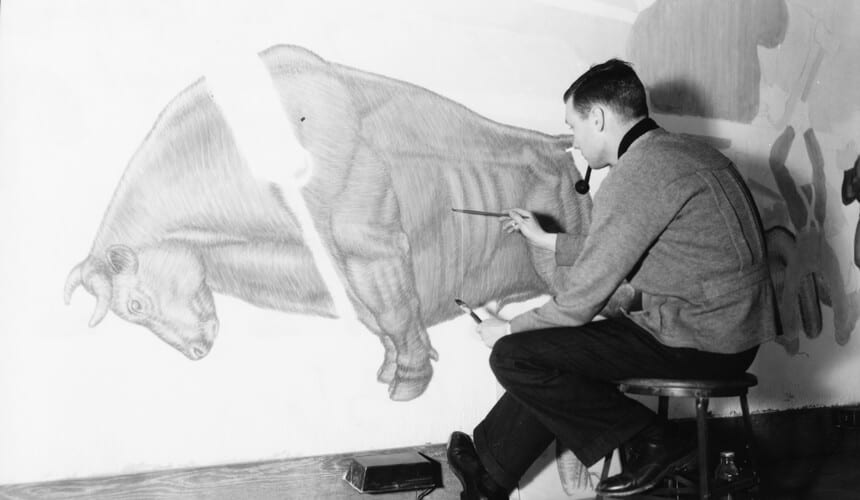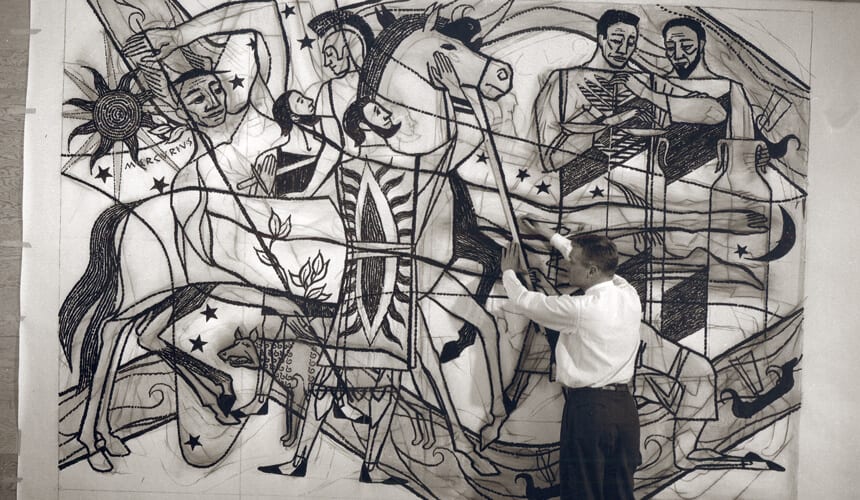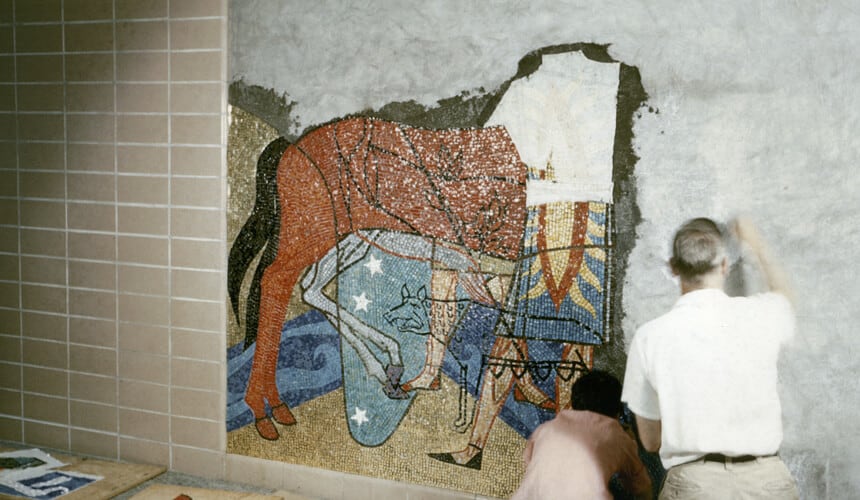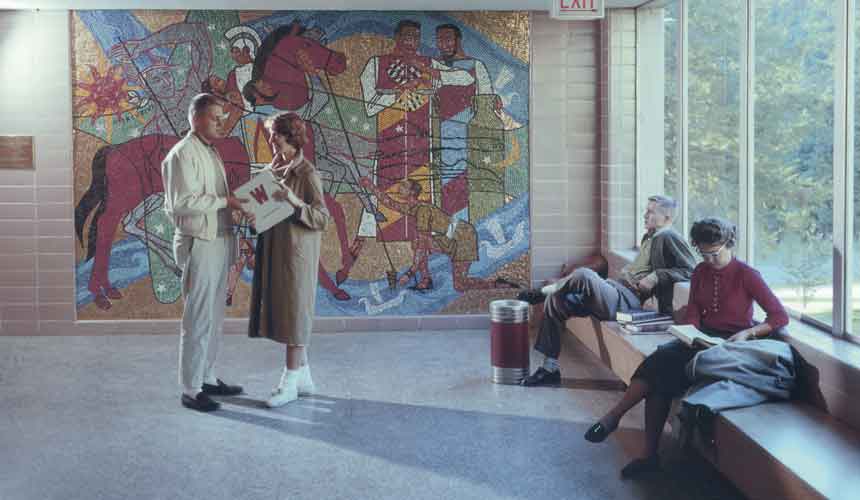James Watrous
Serious Satire
By the time the “Octy” folded for good in 1959, it had served as an incubator for four decades of talented Badger artists and writers.
The Octy’s most famous contributor was James Watrous BA1931, MA1933, PhD1939, who went on to become a professor at the UW — and Wisconsin’s most notable muralist and mosaic artist.
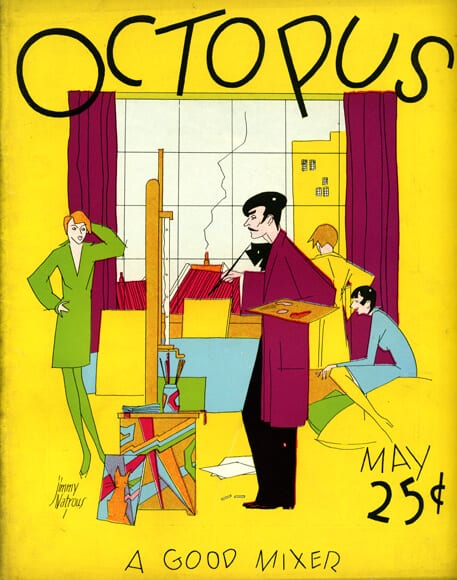
One of 12 covers James Watrous drew for The Octopus. This one is from May 1928. (Image courtesy of the UW Digital Collections Center.)
Watrous got his start as a sophomore cartoonist for the Octopus, and he wasted no time in becoming one of the magazine’s edgiest contributors. One of his early pieces depicted inebriated students at a Prohibition-era prom — a deliberate nose tweak aimed at the Women’s Christian Temperance Union, which had called for censorship of the university’s publications. Watrous eventually became the editor of the Octopus, and under his leadership, the magazine evolved to make more substantial social commentaries. Among other topics, his drawings from this time advocated for instructor pay increases and cautioned against a budding nationalist movement in Wisconsin.
After serving in the U.S. Navy during World War II, Watrous returned to the UW as a professor in the up-and-coming art history department — and to the Octopus as a faculty adviser. He helped the next generation of Badger satirists to revive the magazine after its war-era hiatus, and he was involved until its bitter end.
Watrous is also known for other campus art projects. He painted the Memorial Union’s Paul Bunyan murals and constructed the mosaic pieces that adorn Ingraham Hall, Vilas Hall, Memorial Library, and the Social Sciences Building. He also spearheaded the campaign to build the Elvehjem Museum of Art (now the Chazen Museum of Art), and he was active in the UW art community until his death in 1999.
“You never felt that this was an ivory tower academic,” journalist Whitney Gould BA1965 once wrote about Watrous. “Rather, he was someone who understood the inseparable and enriching connection between art and life, between the artist’s eye and the social fabric in which he or she worked.”
 56° F
56° F